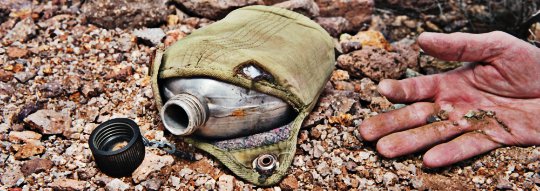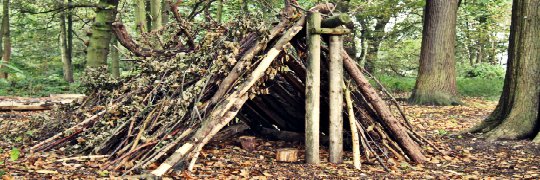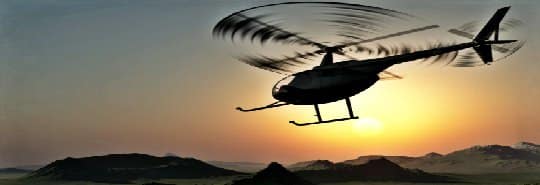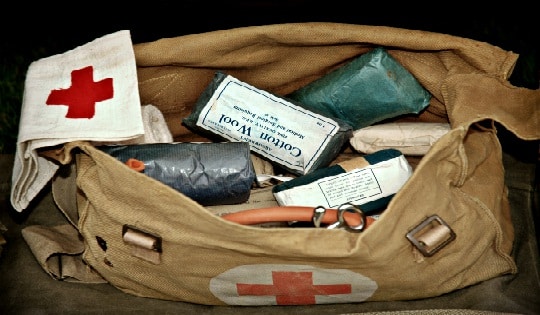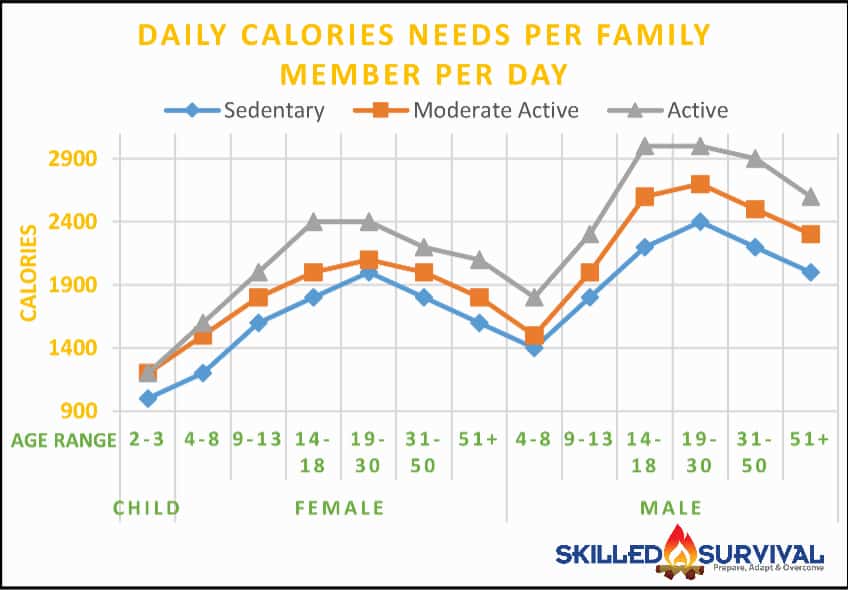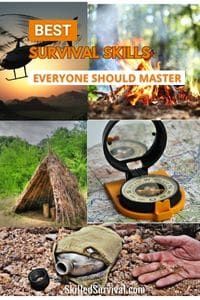
A Guide On The Most Important Survival Skills EVEYRONE Should Know
The ones that, in a worst-case scenario, will bring you home safely.
Because if you spend ANY time in the outdoors, these survival skills can safe your life:
TOPICS IN THIS GUIDE… ↓(click to jump)
- 1. Water Filtration Skills
- 2. Survival Shelters Skills
- 3. Building A Fire Skills
- 4. Navigation Skills
- 5. Signaling | Rescue Skills
- 6. Medical First Aid Skills
- 7. Foraging For Calories
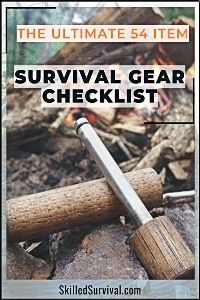
Want a free 54 item survival gear checklist?
Click here to instantly download this Complete Checklist PDF. No purchase necessary.1. Finding & Purifying Water
In most survival situations, water is first.
Why? Because water almost always becomes a player in survival.
If not immediately, within the first 48 hours or so.
The human body makeup is 60% water, requiring constant rehydration.
Human tissue is saturated with water.
- Water protects and lubricates our internal joints, ligaments, and muscles.
- Water is the primary constituent of our blood. It carries oxygen and nutrients to the body’s cells.
- It’s the power that drives the pumping action of our heart is an electrical impulse. These pulses are derived from electrolytes dissolved in the water.
- Your brain tissue also requires water to keep neurons and synapses functioning properly.
If the percentage of water becomes less than normal, dehydration occurs.
Dehydration is what drives us to the fountain.
Thirst can best be described as dryness of the mouth.
The mouth relies heavily on water saturation, to the point of being perpetually wet.
So the first sign of dehydration is through the mouth.
People are often too busy with some task and ignore this first thirst warning.
The second warning the body gives is a mild headache.
Other dehydration symptoms include:
- reduced urinary output
- lethargy
- the inability to perspire or produce tears
- nausea
- rapid heart rate
- tingling of the skin
- high body temperatures
- hallucinations
- heat exhaustion
- eventually death
Not being able to find and purify water is of primary concern in a survival scenario.
Dehydration begins when you are lost, hurt, and need rescue.
Plus, you’ll have to increase your excursion and exposure.
So you’ll dehydrate faster than normal.
So it’s of utmost importance to continuously find, purify, filter, and drink water.
I realize it’s a cliché to say;
It could mean the difference between life and death.
But in the case of finding water, it’s both profound and accurate.
You must master this skill and acquire the right water filtration tools.
↓ How To Find Water
Sawyer Mini Water Filter
I’ve recently become a big fan of the Sawyer Mini Filter.
This tiny water filter can process up to 100,000 GALLONS of water through a 0.1-micron filter.
The Sawyer Mini has hose adapters on either side.
This design allows you to use a large variety of water retrieval options.
For example:
- Splice it into your hydration pack
- Convert it to a gravity filter
- Use a small piece of hose to gather water out of a small crack
Plus, it has a threaded end that screws onto a small bladder to let you filter and drink on the move.
It also only weighs 2oz and is only 4″ long.
Again, for this price, it’s an excellent survival water filter.
↓ Sawyer Mini Water Filter Review
2. Wilderness Survival Shelter
If you ever have to spend the night in the wild, you want something between you and that wilderness.
You’ll want a survival shelter.
And in some circumstances, it’s more than just a preference; it’s downright essential.
A shelter protects from extreme elements.
Humans are not designed for extended exposure from:
- freezing temperatures
- sweltering heat
- high winds
- deep snow
- driving sleet
- heavy rains
We quickly become dehydrated in direct sunlight in a desert.
We can become hypothermic on the tundra of the North within minutes.
Shelter protects us like fur to a bear or blubber to a whale.
Yet, unlike animals, humans have evolved to manipulate our environments.
We’ve created the entire concept of “indoors.”
We create living spaces with heating and cooling built-in.
They’re also designed to protect us from precipitation and wind.
We even moderate humidity levels within our homes for additional comfort.
The truth is:
We’ve flexed our cerebral cortex over thousands of years.
This flexing has led to our modern environments.
This process has had the unintended consequence of humans losing our natural defenses against the elements.
So when we go into the wilderness, we must bring our shelters.
Or quickly create them from what we scavenge.
The shelter clock may expire in hours or even minutes in extreme environments.
So you must learn the areas in which you travel and what materials are available.
That way, you know how to protect yourself quickly.
The last thing you want is for the rescuers who find your dead body to say:
“Look at all the stuff around he could have used to make a shelter. I guess he didn’t know any basic survival skills.”
↓ Type of Shelter Everyone Should Know
The TACT Bivvy Emergency Shelter
And while mastering the skill of building survival shelters is something everyone should learn.
You might also want to prepare for an emergency situation with a TACT Bivvy.
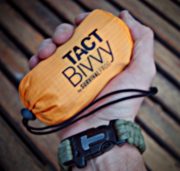
It’s lightweight and made from mylar to trap your body heat.
This little emergency sleeping bag could be the difference between dying of exposure or surviving the night.
Add one to your vehicle, pack, and bug out bag, and get home bag.
↓ Survival Frog TACT Bivvy Review

Want a free 54 item survival gear checklist?
Click here to instantly download this Complete Checklist PDF. No purchase necessary.3. Starting A Fire
Firecraft is the art of making fire.
Those serious about survival should know how important the ability to create fire is.
Fire is useful in all survival situations.
And can be a lifesaver in many of them.
Fire gives us 4 critical elements:
- Heat
- Light
- Smoke
- Cook Food
Hypothermia can occur at low temperatures, especially in soaked clothing.
The heat from a fire can keep us from freezing of hypothermia.
It warms our bodies and dries wet clothes.
Heat is also essential to kill parasites and bacteria in raw meat.
Light from a fire can signal at night, as can the smoke from a fire during the day.
The light from a fire illuminates the dark, which keeps wild animals at bay.
Smoke from a fire can also be used to smoke raw meats, an ancient method of food preservation.
Smoke also can protect you from the biggest killer of them all, the mosquito.
And the key to successful fire starting is preparedness and having the right survival gear.
Starting a fire can be as difficult or as easy as you make it.
If you have fire-starting tools (survival lighters, survival matches, etc.) with you, then a raging bonfire is only a few minutes away.
But what happens if you don’t?
How prepared are you to make a fire without ANY survival tools?
Please don’t use the excuse that you’ll always have a Bic on you at all times.
We all know sh*t happens, we forget, and mechanical devices fail, especially at inopportune times.
It’s wise to invest in natural fire-starting techniques today, just in case.
↓ 13 Ways To Start A Fire (No Matches Or Lighter)
4. Navigation
Many survival situations begin with one losing their bearings in unfamiliar surroundings.
The technical term for this condition is LOST.
The good news is:
The condition of being lost is correctable.
Whether you are lost in the desert, dense forest, mountains, or skies at Mach 3.
The Almighty, through Nature, has given us ways to “find our way.”
But only if you learn these “ways” and practice them.
Lost is not good, but it’s not hopeless.
If you take the time to learn, you should never be “lost.”
Having multiple ways to get you back on course is an underrated but basic survival skill worth mastering.
↓ 5 Navigation Techniques Every Woodsman Should Know

Want a free 54 item survival gear checklist?
Click here to instantly download this Complete Checklist PDF. No purchase necessary.5. Signaling For Rescue
Signaling is the art of drawing attention to oneself.
In the grand scheme of things, we are tiny compared to our vast planet.
Finding someone on the ground is difficult.
Especially if nothing is done to draw attention to oneself.
So what are the fundamental principles for effective signaling?
- Contrast
- Intelligence
First, you must contrast with your environment.
Second, the potential rescuer should see your signal and recognize it immediately.
Your signal should be a clear sign of intelligence.
There are many ways to accomplish this.
So it’s always so sad to hear when rescuers struggle to locate the lost or missing in the wild.
Maybe the rescue team was too late, and the unfortunate soul was gone before the search began.
But what about the poor souls who saw the rescuers?
Yelled at the top of their lungs.
Waved their arms frantically from the forest floor.
Only to helplessly watch the helicopter cruise past and their rescue hopes vanish.
If only they had taken some time to master the survival skill of signaling.
↓ How To Signal For Rescue
6. Medical Skills
A survival situation goes from bad to worse when there’s an injury.
Whether it’s a sprained ankle or a severe wound, you’re in deep trouble if you don’t know how to tend to these medical emergencies.
Even if it’s just learning how to turn a bit of paracord into a stretcher or using a belt as a makeshift tourniquet.
This knowledge is critical and could save your life in dire circumstances.
The Home Doctor

It shows you how to treat yourself and your loved ones in an emergency.
When doctors, pharmacies, and hospitals are out of reach.
And you don’t need any medical training…
And here’s the best part:
You won’t need to spend a bucket load of cash or waste weeks poring over hundreds of pages.
Why? Because there are no weird medical terms to learn!
It’s easy and read due to its many large detailed images.
↓ Home Doctor Book Review – Is It Worth Buying?

Want a free 54 item survival gear checklist?
Click here to instantly download this Complete Checklist PDF. No purchase necessary.7. Food Acquisition
In most survival scenarios, immediate rescue, water, and shelter are the priorities.
There are more important survival skills than food acquisition.
Food acquisition should not be at the top of the priority list.
Why? Because Man can live for weeks without food.
But can perish in days without water or shelter.
That said, perhaps you have long-term plans for living in the wilderness.
Perhaps society has collapsed, or a pandemic has forced you away from your fellow man.
Whatever the reason, if you must live for weeks in the wild, you’ll need nourishment.
To understand what foods you need, you must understand what nutrients your body requires.
Carbohydrates, fats, proteins, fiber, vitamins, and minerals are required to survive long-term.
- Carbs and fats provide the necessary energy.
- Protein assists in the building and repairing of muscles.
- Vitamins and minerals are critical for efficient bodily functions. Functions such as the immune system prevent diseases.
- A certain fiber level is also necessary to keep everything moving through your body.
So where can you find these substances in nature, and how can you acquire them?
Fish, small game, identifying edible plants, berries, fungi, and pine trees are valid wilderness food supplies.
The average man needs 2500 calories daily to sustain weight and the typical female 2000 calories.
This is based on a nominal level of activity.
However, if you are in survival mode, you will be:
- moving long distances over rough terrain
- carrying gear
- gathering food
- building shelters
You will be burning considerably more calories.
Perhaps thousands more.

Want a free family-first food planning guide?
Click here to instantly download this Complete Checklist PDF. No purchase necessary.- Wild game comes in at about 500 calories per pound.
- Fish and seafood 600-800 calories per pound.
- Green plants around 100 calories or less per pound.
If living in the wilderness is the goal, this excessive calorie burn will make food acquisition a continuous struggle.
Similar to the continuous need to find and purify water.
Food acquisition no longer consists of stopping by the grocery store on your way home.
Or calling the local pizza joint for the deal of the day.
No, finding enough nutritious calories just became your new full-time job.
It’s primarily fishing, hunting, and foraging wild plants…
You better know what the hell you’re doing.,,,
↓ Survival Tips – What To Eat
Note: Honorable mention – you should also learn the skill of tying knots.
How To Master Survival Skills
There are 2 things you need to do to master any skill (especially Basic Survival Techniques):
- Learn
- Practice
That’s it.
If you do both of these properly, you will eventually master them all:
↓ 50 Survival Tips
It’s not a matter of if but when.
However, if you learn but don’t practice, you are book smart but skills dumb.
You might be able to explain how to survive.
But you’ll fail miserably when put to the real test.
If you practice but don’t learn, you’re just messing around.
Do both, and you’ll stack the deck in your favor should your next adventure go sideways…
Why Trust Skilled Survival...
Go here now to review a full breakdown of:
- Who We Are
- Our Credentials
- Our Mission
- & Product Recommendations...
Here are a few highlights of our teams credentials & certifications:
- Certified Member of a Mountain Search & Rescue Organization
- Plant Emergency & Safety Leader for a Major Food Manufacturer
- Member of the 10TH Mountain Division Hut Association
- Certifications: Avalanche 1, WFR, CPR
- Official Gear Tester for Numerous Outdoor Gear Companies
- Countless Multiday Backpacking trips into Remote Wilderness
- Bachelor's Degree In Mechanical Engineering
- Bachelor's Degree In Civil Engineering
- Bachelor's Degree In Biomedical Engineering
"It takes 20 years to build a reputation and five minutes to ruin it." - Warren Buffett
We're fully aware that trust is NOT something you GET but is EARNED.
And we'll continue to earn YOUR trust through our forthright and honest approach with each new Blog Post, Guide & Product we create...
Prepare, Adapt & Overcome,

P.s. Do You Live In A 'Danger Zone' County?
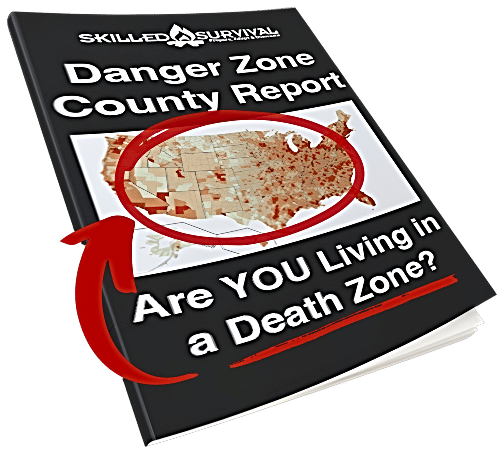
Find out now using my Danger Zone County List & Special Report it’s absolutely FREE.
In minutes you’ll know EXACTLY where you stand and if you should be worried or not..
So click here to get my FREE Danger Zone County List & Report…

Recommended Reading
Survival Pack: How To Build One NOW (before SHTF)
Survival pack list From Scratch. Packs That Will Make You A Hero To Your Family. Plus, Some Of Th Best Packs You Can Buy
Best Survival Packing List To Plan For An Evacuation
Everyone needs a survival packing list to organize their escape. That way you won't regret leaving something critical behind.
13 Best Wild Edibles ANYONE Can Find Nearly Everywhere…
Discover the best wild edible plants you can find and eat nearly anywere. Knowing and identifying these wild edibles could save your life.
How To Make Catfish Bait: My Grandpa’s Ultimate Recipe
I want to share with you what I consider the best catfish bait recipe. Here's how to make stink bait that will get the catfish to bite.
Paracord Projects: 17 Surprising Things You Can Make
I share the best paracord projects that are both fun and useful. By doing these crafts you'll always have lifesaving cordage on hand.
Cold Weather Survival: Unexpected Ways To Stay Warm
In a cold weather emergency, you can be a cold weather survivor or a victim. These critical skills will help you stay warm & alive.
